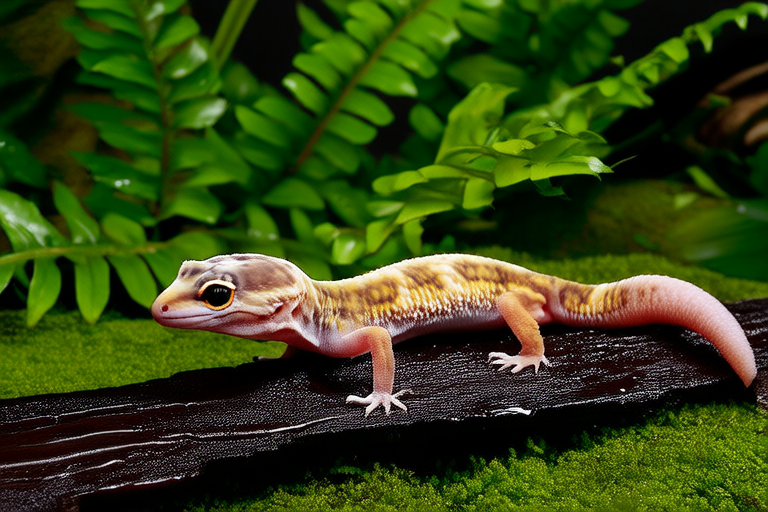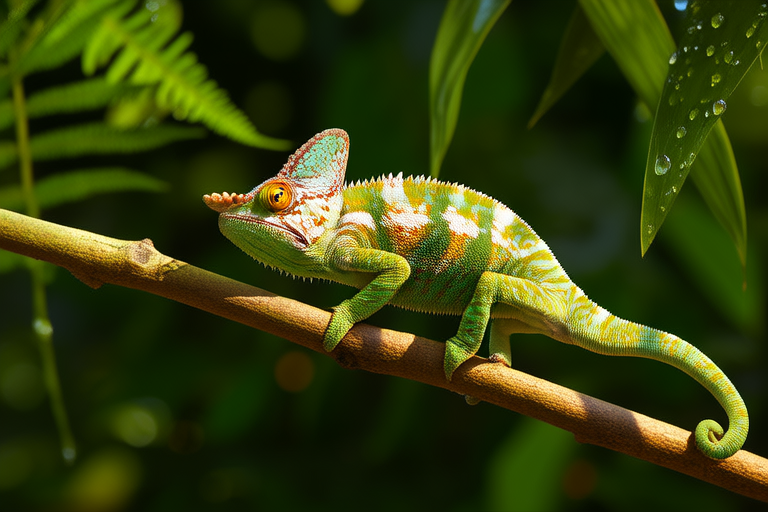
How to Create the Perfect Habitat for Your Pet Chameleon
Chameleons are fascinating reptiles that require specific environmental conditions to thrive. Creating the perfect habitat for your pet chameleon involves understanding its natural environment and replicating it as closely as possible. This article will guide you through the essential elements needed to set up an ideal living space for your chameleon, ensuring its optimal health and well-being.
Appropriate Size and Type of Enclosure
The first step in creating a perfect habitat is selecting the right enclosure. Chameleons need vertical space to climb and bask, so choose a tall cage with ample room for movement. A minimum size of 3 feet wide by 4 feet deep by 6 feet high is recommended for most species. Avoid aquariums, as they lack proper ventilation; instead, opt for mesh enclosures designed specifically for reptiles.
Necessary Lighting Including UVB Requirements
Lighting is crucial for chameleons’ overall health. They require both heat lamps and UVB bulbs. UVB light helps chameleons produce vitamin D3, which aids in calcium absorption. Ensure the UVB bulb covers at least 70% of the enclosure and is placed within 6 inches of the basking spot. Replace UVB bulbs every six months, even if they still appear functional. Use a timer to maintain a consistent day-night cycle, typically 12 hours of light followed by 12 hours of darkness.
Suitable Temperature Gradients
Maintaining the correct temperature gradient is vital for chameleons. Provide a hot spot where the temperature reaches between 90°F and 95°F (32°C – 35°C) during the day. The cooler side of the enclosure should be around 75°F to 80°F (24°C – 27°C). At night, temperatures can drop slightly but should never fall below 65°F (18°C). Use thermometers and hygrometers to monitor these conditions accurately.
Humidity Levels
Chameleons also need adequate humidity, ideally between 50% and 70%. Achieve this by misting the enclosure twice daily or using an automatic mister system. Water dishes should be provided, but most chameleons prefer to drink from droplets on leaves rather than directly from water sources. Ensure the enclosure has proper drainage to prevent standing water, which could lead to bacterial growth.
Substrate Options
Choosing the right substrate is important for preventing ingestion and maintaining hygiene. Avoid substrates like sand, gravel, or wood chips, as they pose choking hazards. Instead, use paper towels, reptile carpet, or coconut fiber bedding. These options are easy to clean and pose no risk to your chameleon’s digestive system.
Safe and Enriching Decorations
Decorations not only enhance the aesthetic appeal of the enclosure but also provide mental stimulation and climbing opportunities. Branches, vines, and artificial plants are excellent choices. Ensure all items are securely anchored and free from sharp edges. Natural branches offer additional benefits, such as promoting healthy limb development and providing varied textures.
Proper Ventilation
Good air circulation is essential for preventing respiratory issues and maintaining optimal humidity levels. Mesh enclosures naturally allow for better airflow compared to glass tanks. If using a glass tank, ensure there are multiple ventilation points to facilitate proper circulation.
Feeding Areas
Designate specific areas within the enclosure for feeding to prevent contamination of other spaces. Place food dishes away from water sources to avoid spoilage. Live insects can be released into the enclosure for hunting, which provides enrichment and exercise. Ensure feeder insects are gut-loaded with nutritious foods before offering them to your chameleon.
Regular Maintenance Tips
Regular cleaning and maintenance help keep the enclosure hygienic and promote your chameleon’s health. Clean the enclosure weekly, removing waste and replacing any soiled substrate. Disinfect surfaces with a reptile-safe cleaner and rinse thoroughly before returning the chameleon to its habitat. Check equipment regularly for signs of wear and replace as needed.
Common Mistakes to Avoid
Avoid placing the enclosure near windows, as direct sunlight can cause overheating. Do not overcrowd the enclosure with too many decorations, as this can limit movement and create stress. Refrain from using pesticides or chemicals in or around the enclosure, as they may harm your chameleon. Lastly, always consult with a veterinarian or experienced herpetologist when setting up or making changes to your chameleon’s habitat.
Resources for Further Learning
To deepen your knowledge about chameleon care, consider joining online forums and communities dedicated to reptile enthusiasts. Many local pet stores host workshops or seminars on reptile husbandry. Books and articles written by experts in herpetology offer valuable insights and best practices. Additionally, reputable websites and blogs focused on exotic pets provide up-to-date information and practical advice.





